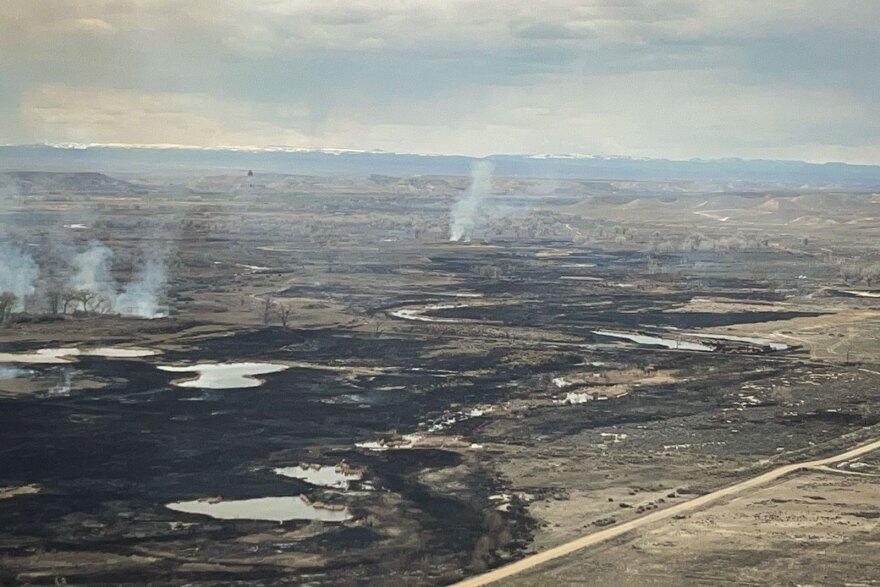Despite the record snowpack and the everpresent talk of spring runoff and flooding, Utah has already seen over 20 wildfires so far this year.
That figure comes from the Utah Division of Forestry, Fire and State Lands. Kayli Guild, the prevention and communications coordinator, said the fires have been minimal and there’s not a high risk — at the moment.
Thanks to the snow, Utah will likely see a later start to wildfire season. But the bounty doesn’t erase the risk and the next few months will determine how big of a problem it’ll be this summer.
The latest outlook from the National Interagency Fire Center forecasts below-normal fire potential for parts of Utah through May. They are predicting normal levels by July as the summer heat rises.
Fire forecasting is complicated and involves a lot of uncertainty, said Jon Meyer, assistant state climatologist at Utah State University's Utah Climate Center. So it’s hard to predict in April what wildfire season will look like by July.
“There will be a fork in the road that we haven't reached yet and that will come most likely in middle to late June when the summer weather pattern has begun to reveal itself,” Meyer said. “And that'll be the point when our forecast outlooks begin to become far more confident in what our summer wildfire season will look like.”
One factor that will determine the severity is how hot and dry this summer is, something that’s hard for Utahns to imagine at the moment with ski areas still crowing about new records and storms dusting the tops of the Wasatch Front as May approaches.
While all of this precipitation will delay the onset of wildfire season, which is a good thing, Meyer said it’s also a double-edged sword. Lots of water and social moisture mean lots of plant growth.
“If the summer stays cool and wet, then the vegetation is happy and continues to grow. But if we get a hot and dry summer, that vegetation dries out and now all of the sudden we’ve got a ton of fuel on the ground. So any wildfire that does spark has a bunch of extra horsepower to tap into that’s very quick, very easy to burn,” Meyer said.
Another variable is the summer monsoon season, which Meyer said is also hard to forecast. Part of what will determine how the wildfire season looks is how much monsoonal moisture the state gets and when. The seasonal downpours also bring risks of lightning.
“We talk about relying on seasonal cycles to predict wet and dry phases, hot and cold phases. And those cycles are getting more erratic and they're becoming less predictable, which translates to less predictable impacts like wildfire outlooks and flood risks,” Meyer said.
In addition to the difficulties it adds to forecasting, Meyer said there are “lots of ways that climate change is loading the dice for our fire season.”
Even as state leaders are pleased with what the runoff will mean for the Great Salt Lake and the drought overall, there are a lot of unknowns surrounding what this wildfire season looks like.
“We need to be on the alert and ready for anything,” Guild said.







